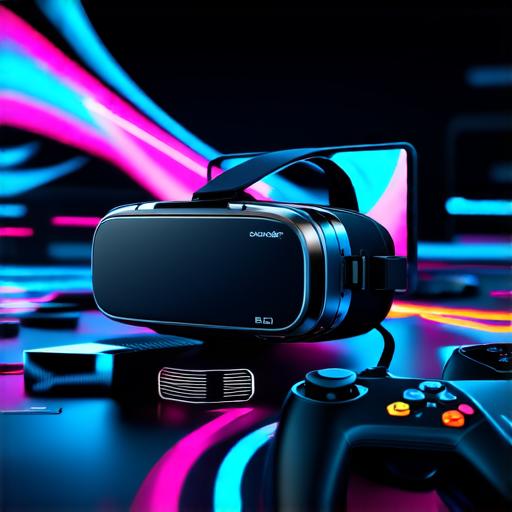<!DOCTYPE html>
What is Virtual Reality?
Virtual reality refers to a computer-generated simulation of a three-dimensional environment that can be experienced and interacted with by a person wearing a specialized headset or other sensory devices. VR technology has been around for several decades, but recent advancements in hardware and software have made it more accessible and affordable than ever before.
Benefits of Virtual Reality
Virtual reality offers numerous benefits for individuals and businesses alike. These include:
- Immersive experiences that transport users into realistic simulations of real-world environments or completely imagined worlds
- Enhanced training and education experiences, allowing individuals to learn in a safe and controlled environment
- Increased productivity and efficiency by providing users with interactive tools to visualize complex data and processes
- Improved mental health and wellbeing by reducing stress and anxiety through exposure therapy
- Entertainment value, offering unique gaming and interactive experiences that cannot be replicated in the real world.
Virtual Reality Applications
Virtual reality is already being used in a variety of industries, including:
- Gaming and entertainment
- Medical training and education
- Architecture and design
- Engineering and manufacturing
- Military and defense
- Tourism and hospitality
- Real estate and construction.
What are 3D and 4D?
The terms “3D” and “4D” have been used to describe various aspects of reality, technology, and art. In the context of virtual reality, these terms refer to different dimensions of the virtual world that users can experience.
3D Dimension
The most commonly discussed dimension in virtual reality is the three-dimensional (3D) dimension. This refers to the ability to create a realistic representation of depth and space within a virtual environment. In a 3D virtual world, objects have length, width, and height, allowing users to interact with them in a way that simulates real-life experiences.
4D Dimension
The four-dimensional (4D) dimension is less commonly discussed but can be achieved by adding an extra element of interaction or movement to the virtual environment. This could include the ability to manipulate objects within a virtual world, such as rotating or scaling them, or adding a temporal element that allows users to move through time within the virtual world.

Is Virtual Reality 3D or 4D?
Virtual reality technology is typically considered to be a three-dimensional (3D) medium, as it allows users to experience depth and space within a virtual environment. While some VR experiences may incorporate elements of interaction or movement, the primary focus is on creating a realistic representation of a three-dimensional world that users can explore and interact with.
Limitations of Virtual Reality
Despite its potential, virtual reality technology has several limitations that must be considered by developers. These include:
- Limited field of view (FOV) – The width of the user’s visual field in a VR environment is typically much smaller than in real life, which can lead to motion sickness and disorientation for some users
- Limited interaction – While VR technology has come a long way, it is still limited in terms of the types of interactions that users can have with virtual objects. For example, users cannot physically touch or manipulate objects within a virtual environment.
- High costs – Virtual reality hardware and software can be expensive, which can limit its accessibility for some businesses and individuals.
Real-Life Examples of 3D and 4D VR Experiences
<p
